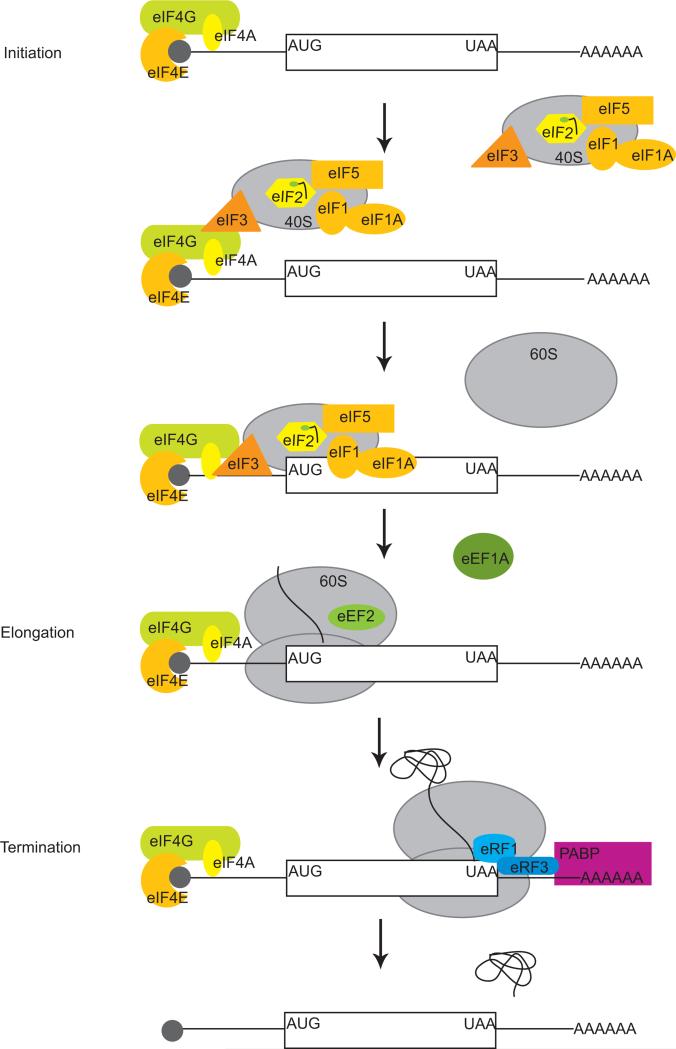Figure 1.
A schematic representation of translation. mRNA translation occurs in 3 steps; initiation, elongation, and termination. During the initiation phase, mRNA is bound by the eIF4F complex, consisting of eIF4G, eIF4E, and eIF4A, through interaction of eIF4E and the 5’ cap of the mRNA. The 43S pre-initiation complex, composed of the 40S ribosome, eIF2-ternary complex, eIF1, eIF1A, eIF5, and eIF3, is recruited to the message through interactions between eIF4G and eIF3, thereby forming the 48S pre-initiation complex. This agglomeration of proteins and the 40S ribosomal subunit scans the mRNA until the initiating AUG codon is reached. The 60S subunit then joins and the initiation factors are released. Translation elongation begins when the peptide chain is elongated. Elongation factor eEF1A brings charged tRNAs to the translating ribosome; eEF2 promotes translocation. Once the termination codon is reached, release factor eRF1 binds in place of tRNA. eRF3 stimulates GTP hydrolysis and the peptide chain is released together with the 40S and 60S subunits. PABP refers to poly(A) binding protein.

